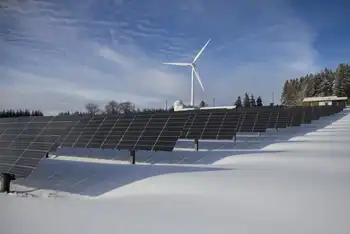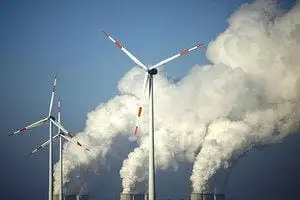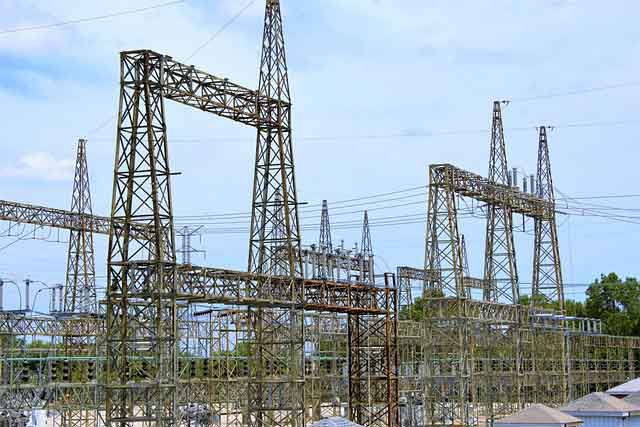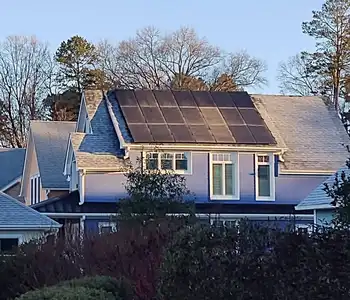Maine wind farm gets stimulus funds
By Bangor Daily News
Protective Relay Training - Basic
Our customized live online or in‑person group training can be delivered to your staff at your location.

- Live Online
- 12 hours Instructor-led
- Group Training Available
U.S. Treasury Secretary Tim Geithner and U.S. Department of Energy Secretary Steven Chu announced that a 57-megawatt facility on Stetson Mountain in Danforth in northwestern Washington County is among 12 to benefit in a first round of grant awards from an American Recovery and Reinvestment Act program.
“The Recovery Act is investing in our long-term energy needs while creating jobs in communities around the country,” Geithner said. “This renewable energy program will spur the manufacture and development of clean energy in urban and rural America, allowing us to protect our environment, create good jobs and revitalize our nation’s economy.”
Operated by parent company First Wind of Massachusetts, the sole Maine project consists of 38 one-and-a-half-megawatt General Electric turbines, a substation, access roads and a 34.5-kilovolt collection system. As part of the project, a 38-mile transmission line was built to connect Stetson Mountain to the regional electricity grid.
The Stetson I project was eligible for stimulus funds because it came on line this year, said John Lamontagne, a spokesman for First Wind and its subsidiary, Evergreen Wind Power LLC.
The 12 selected projects are all now operational, said Tiffany Edwards, a spokeswoman for the U.S. Department of Energy.
The federal grant effectively gives First Wind the benefits of tax credits that would have been spread over the life of the Stetson Mountain project, but instead provides those credits as upfront money.
“Our plan is to reinvest the funds so that we can accelerate the development of new renewable energy projects that will create jobs and increase the level of clean energy in this country,” Lamontagne said.
Company officials have yet to decide which project will be funded, Lamontagne said.
The Recovery Act program is expected to provide more than $3 billion in financial support for clean energy projects by providing direct payments. These payments will support an estimated 5,000 biomass, solar, wind, and other renewable energy production facilities nationwide.
The first round of funding supports the creation of more than 2,000 jobs in the renewable energy industry — in construction and manufacturing — while moving the nation closer to meeting the Obama administration’s goal of doubling renewable energy generation in the next few years, according to the administration.
Anti-wind activists questioned why so much money was being lavished on windmills, which they describe — and wind activists concede — is an erratic source of energy, given the intermittent nature of wind and the lack of battery cells large enough to house the power they generate.
“One has to ask why energy sources such as wind need so much help if they are so viable an alternative,” said Eric Rosenbloom, president of National Wind Watch Inc. “Perhaps they are not so viable at all but rather just a politically popular symbol of a certain strain of ‘green’ thinking.
“Twenty years of grants and tax breaks haven’t worked yet,” Rosenbloom added, “so it is unlikely that this latest round will have any effect on our energy mix — but it will cause more wind energy facilities to be built, irreparably destroying yet more rural and wild areas of this country.”
First Wind has one operating wind farm in Maine besides Stetson — a 42-megawatt project at Mars Hill — and six projects in advanced or early development.
The six in development include Stetson II, a 25-megawatt project also located in Danforth; the 60-megawatt Rollins Mountain project on ridgelines in Burlington, Lee, Lincoln and Winn; a 55-megawatt project in Oakfield; and the 40-megawatt Longfellow project in Rumford. The locations of two other projects totaling 230 megawatts have yet to be announced.
First Wind also has 29 other projects in what the company terms early to advanced development, or under construction, in Canada, California, Hawaii, New Mexico, New York, Oregon, Utah, Vermont, Washington and Wyoming.
Three other First Wind projects, two in New York and one in Hawaii, already operate.
By leaving open the possibility that the federal money could go into projects outside Maine, LamontagneÂ’s statements conflicted somewhat with those from MaineÂ’s federal legislators, who presumed the money would stay local.
“This money is going straight into the Maine economy to create jobs and stimulate business across the state,” said U.S. Rep. Chellie Pingree.
“First Wind is part of the growing clean energy industry in our state,” Pingree said. “It is an industry that is going to create new jobs and new sources of clean, renewable energy to Maine. I’m committed to helping develop this industry, and this grant is going to give those efforts a big boost.”
“Investment is critical if Maine is to become a leader in the development of wind power,” U.S. Sens. Olympia Snowe and Susan Collins said in a joint statement. “This funding will assist Evergreen Wind Power to tap this potential and will help create good-paying, clean energy jobs in Maine.”
Lamontagne hinted strongly that the grant would be expended in Maine, which he called “one of our priority states.”











